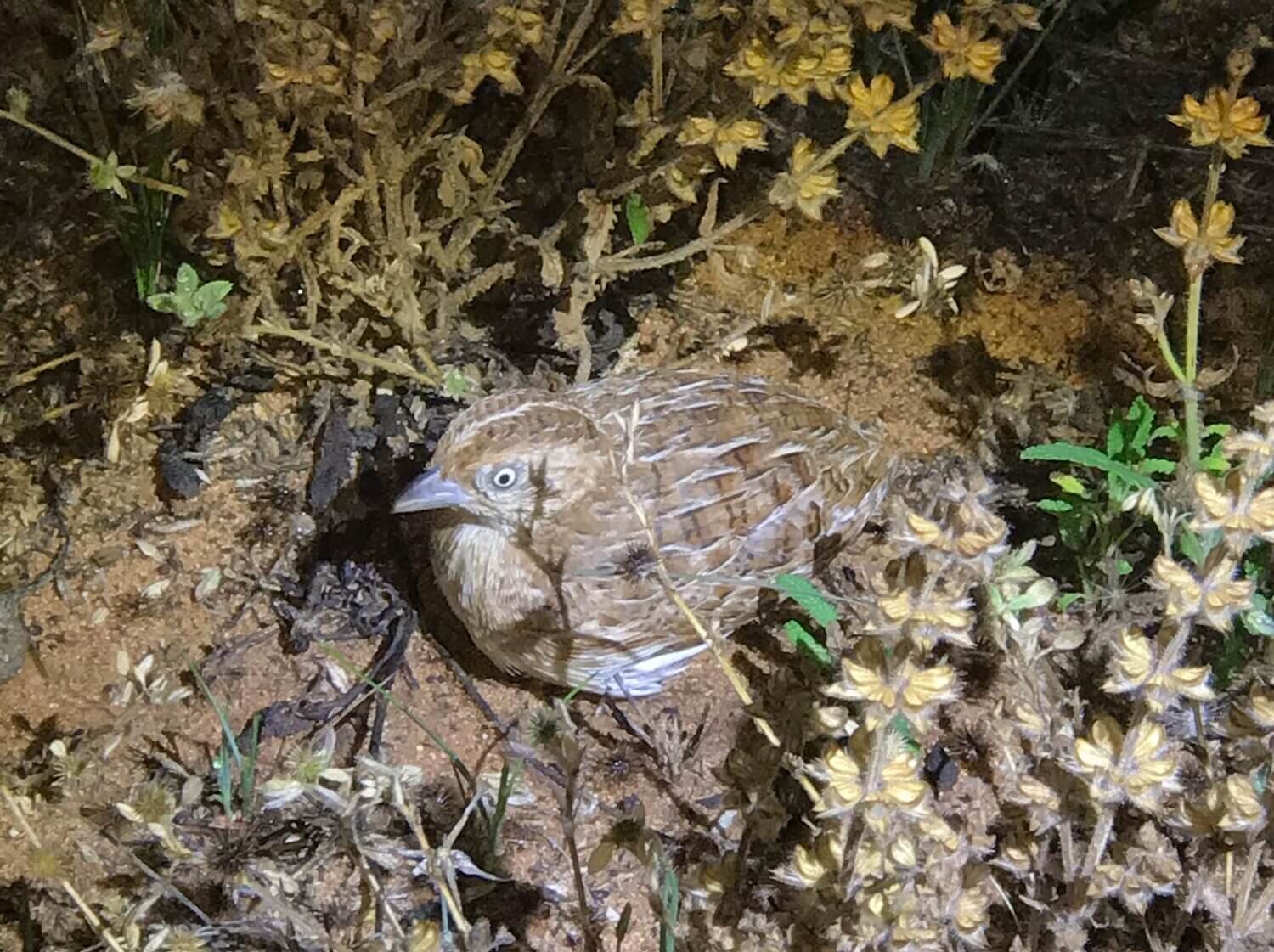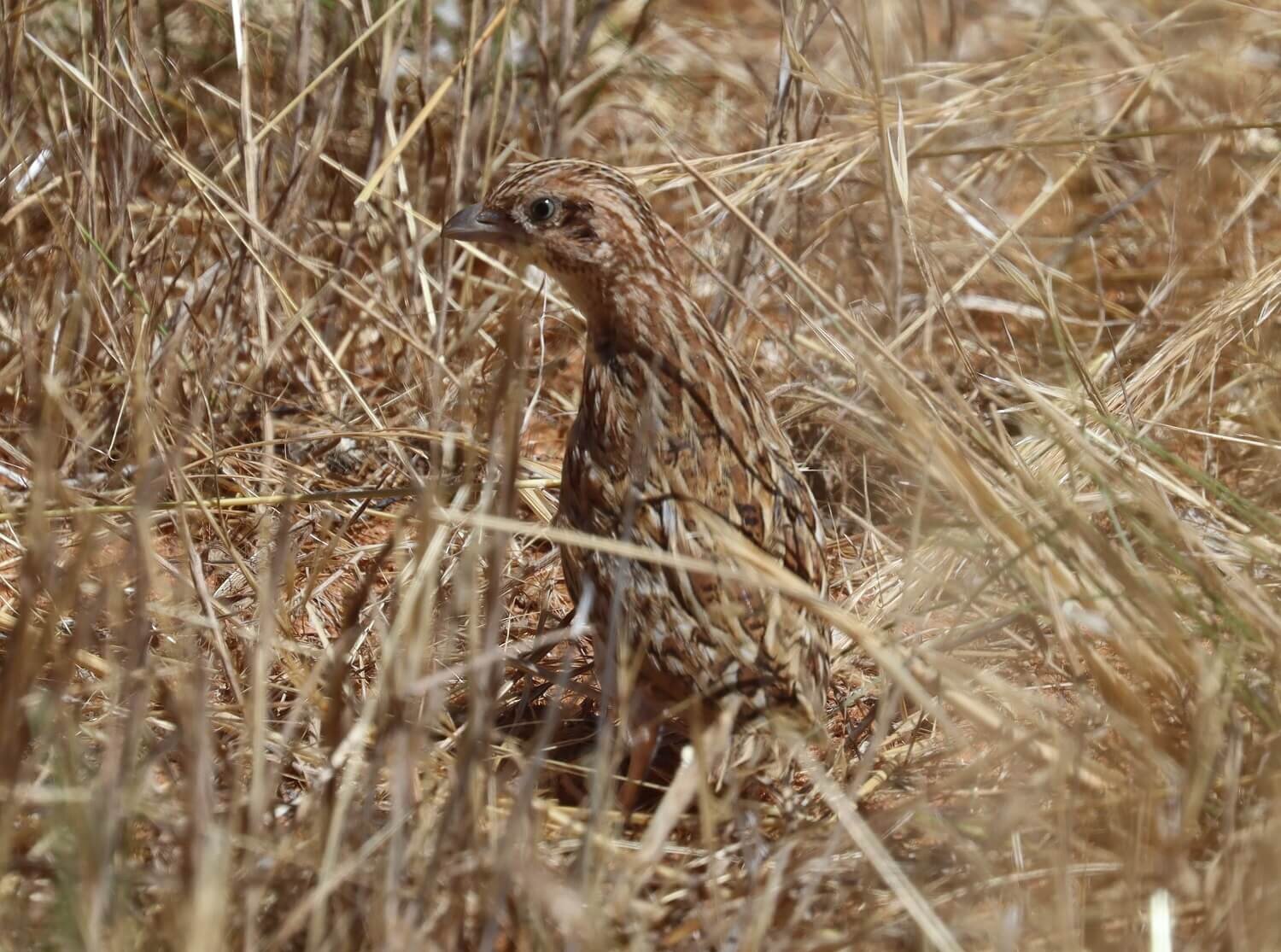Little Button-quail breeding
Since I shared our first blurry photos of the Little Button Quail (Turnix velox) on Raakajlim back in mid October, we have been haunted by them. I mean seriously haunted … have you heard their call? How can a tiny bird make this deep hooo-ooo? And at night, it’s scary. Have a listen here.
Mostly what we’ve seen is a flash of the white flanks as a bird flies away, but the flight is pretty distinctive as a Little Button-Quail. However, we did get a reasonable photo one night. It’s a small bird and you can see the chunky blue-grey beak. This makes it different to our other quails, the Brown and Stubble, both of which are plump birds with a finer beak.
The life-history is a bit like the famous Plains Wanderer, particularly with the female being more brightly colored than the male. This is unusual in the bird world. Button-quail nest in a small scrape in the dirt, lined with grasses. And like the Plains Wanderer, it’s the males that do the incubating of eggs and raise the young. The females aren’t loyal to their mate either.
Little Button-quail feed on grass seeds, young plants and insects. On Raakajlim, the good Winter and Spring rains have created the native grassland that the Button-quail need for breeding … and we’ve even seen a juvenile!
First published December 5th, 2020





